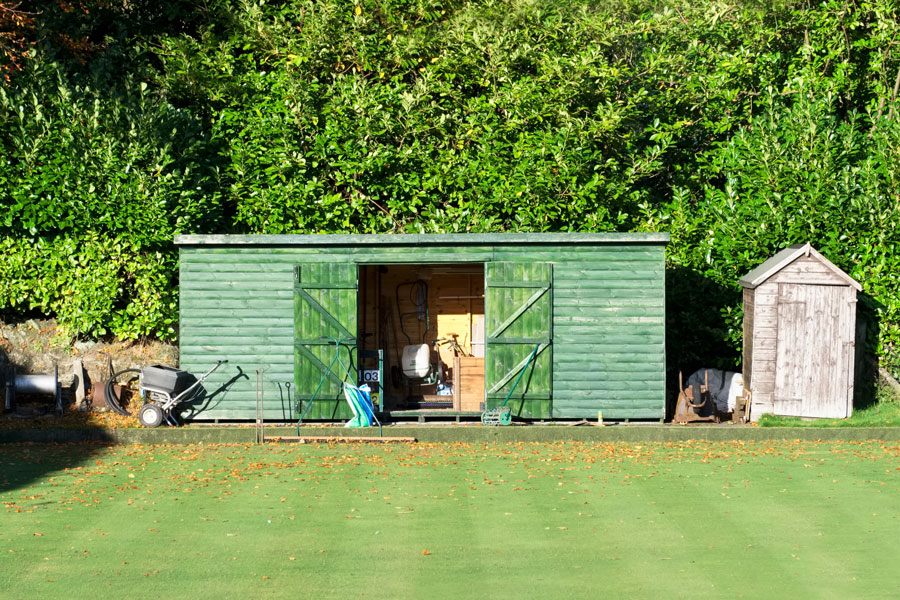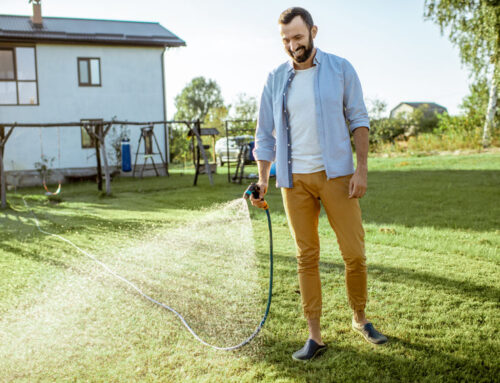The fall season is a great time to take care of some maintenance issues in the backyard. You may not want to think about snow and frost until November, but there are certain things you can do now that will help your yard survive the colder months ahead. Even if you don’t live in an area that gets snow, cold weather can still cause damage to plants and equipment like garden hoses and deck furniture.
Here’s a Fall Checklist for Backyard Clean-up:
Gathering leaves
Fall is a great time to gather leaves. Leaves are a source of nutrients for the soil and can be used as mulch in your yard. They help retain moisture, prevent erosion and add organic matter to the soil.
Leaf vacuum – If you have a large yard with trees, consider investing in a leaf vacuum that will suck up all those fallen leaves from the ground and make your work easier. You can also use this tool for collecting other types of debris such as pine needles or small branches from shrubs or trees in the garden area.
Rake – A rake is useful if you only have small amounts of leaves scattered throughout your garden area since it will allow you to move them all at once rather than having to go over each individual piece individually with something like an electric blower or rake/blower combo device which may take longer depending on how long it takes before they run out of charge (and they do!).
Preparing your lawn mower for winter storage
When storing your lawn mower for the winter, there are several important things to do. First and foremost, make sure that your lawn mower is clean and dry before storing it. Next, check the oil level. If you have a gas powered engine check the gas line as well; if necessary add fuel stabilizer to keep it from getting gummed up over time without use. Then plug in an air filter gauge to determine whether it needs replacing (a good idea). Finally, look at all of these parts closely: make sure there aren’t any cracks or damage on them that could cause serious problems when you start using it again next year!
Drain and store your garden hoses
In order to prevent your garden hose from freezing, you need to drain it out before winter. First, remove the hose from its storage place (if applicable) and lay it out on the ground so that all of the water can escape. Next, tie a knot in one end of the hose so that any excess water will remain inside while you’re draining it. Then roll up that portion of the hose and store it somewhere safe where no one will trip over it or step on it—it may be best to keep this part in your garage or shed until next season when you’ll want to get rid of any kinks or twists that have occurred during storage.
Finally, cover up whatever’s left with plastic sheeting until you’re ready for use again next spring!
Cleaning and repairing your deck or patio
The best way to clean and repair your deck or patio is with a pressure washer. You’ll need to use it on the deck, but also around the edges of your house where it meets the driveway or patio.
After you’ve cleaned away all of that dirt and grime, you’re ready for repairs! For this step we’re going to use wood filler. Wood fillers come in different colors so pick one that matches your existing wood as closely as possible (or go with a contrasting color if you’d like). Read the instructions on how much product to scoop out in order to get an accurate estimate of what amount will be needed for each area being repaired – there are charts available online that can help guide this process based on square footage measurements.
Once scooped out onto a paintbrush (or just spread out onto surface), let dry completely before sanding smoothness back into place using fine grain sandpaper. Once back at full smoothness, apply another layer of clear coat over top; this will help protect against wear & tear while enhancing appearance.
Inspecting your deck or patio for damage
The time to inspect your deck or patio for damage is now, before it’s too late. Look at the fasteners that hold boards together, like screws and nails. They’re there to hold the structure together. But they can also loosen over time if they’ve been in place since your deck was built.
When you look at railings, make sure they’re secure. Look for loose screws or nails; loose railings are a serious safety hazard to anyone walking through them. Also, if those railings aren’t secured properly, they’ll become unsteady and potentially fall apart.
Check handrails by holding onto them with both hands and rocking back and forth slightly; if you feel any give at all where you’re holding onto the railing (like when you press down on an old mattress), then it’s probably not as sturdy as it should be. A similar test applies for stairs: does this step make your foot shift around uncomfortably? If so, then something might need tightening up!
If there are patio tiles on top of concrete slabs in your backyard (or even inside!), check those too—they may have loosened up over time depending on how often people walk on them. The same goes if there are cracks between these two materials.”
Cleaning your deck or patio
Clean your deck or patio with a pressure washer. Pressure washers are great for cleaning patios and decks because they produce an intense stream of water that can clean up dirt, debris, and even pet stains in a matter of minutes. If you don’t have access to one at home, don’t worry—you can rent them at most hardware stores. Use a garden hose to clean your deck or patio.
If you’re looking for something simpler than renting or buying a pressure washer and don’t mind having to lug around large pieces of equipment from place to place (or if it’s just too cold outside), try using just your old-fashioned garden hose—which also may be more affordable! You’ll want one with as strong a sprayer as possible because it will help dislodge dirt and debris from cracks in concrete surfaces like stairs when sprayed under pressure from above rather than simply sprayed across those same surfaces horizontally like normal sprinklers do when watering plants around your house during summer months…
Cold weatherizing your deck, porch, or patio furniture
You can protect your outdoor furniture from the elements with a variety of techniques. Here are some options:
- Cover it with a waterproof cover. If you have patio or deck furniture that’s made of wood, metal, or wicker, consider covering it with a protective waterproof cover. This will ensure that your chairs and benches don’t become soggy during rainy months.
- Cover it with a heavy blanket or tarpaulin. Another option is to place extra blankets over any exposed parts of your outdoor furniture. That will protect them from rain and snow as well as harsh winds. Don’t forget to remove these covers before they begin to mildew; otherwise, they’ll get moldy quickly because they were left out all winter long unprotected by anything else besides air circulation (which isn’t enough).
Covering water features
If you have a water feature in your backyard, cover it with a tarp or plastic. If there’s any chance of freezing during the winter months, covering it will help to prevent cracks and damage. Also, it helps keep leaves out of the water so you don’t have to clean them out in springtime.
Additionally, if there’s snow on your coverings, animals are less likely to use that area as a source of water. This is because they won’t be able to get through the snow layer covering your pond or fountain.
Filling bird feeders with high-energy foods, such as sunflower seeds and suet.
Filling bird feeders with high-energy foods, such as sunflower seeds and suet.
The sunflower seed is a common favorite of birds, but you can also mix it up by offering them suet. Suet is the hard fat from around the kidney of beef or mutton that’s been processed into cubes. It comes in small, medium and large sizes.
Fall is a good time to make sure you’re ready for the cold weather ahead
Fall is a good time to make sure you’re ready for the cold weather ahead. Take some time now to gather leaves, drain hoses and clean up your deck or patio. That way you can enjoy them when the weather turns chilly.
Concluding your Fall checklist for backyard clean-up
Hopefully, this post has given you some ideas for how to keep your backyard in tip-top shape. Remember, to prepare for any weather that may come your way—even if it means buying new tools.








